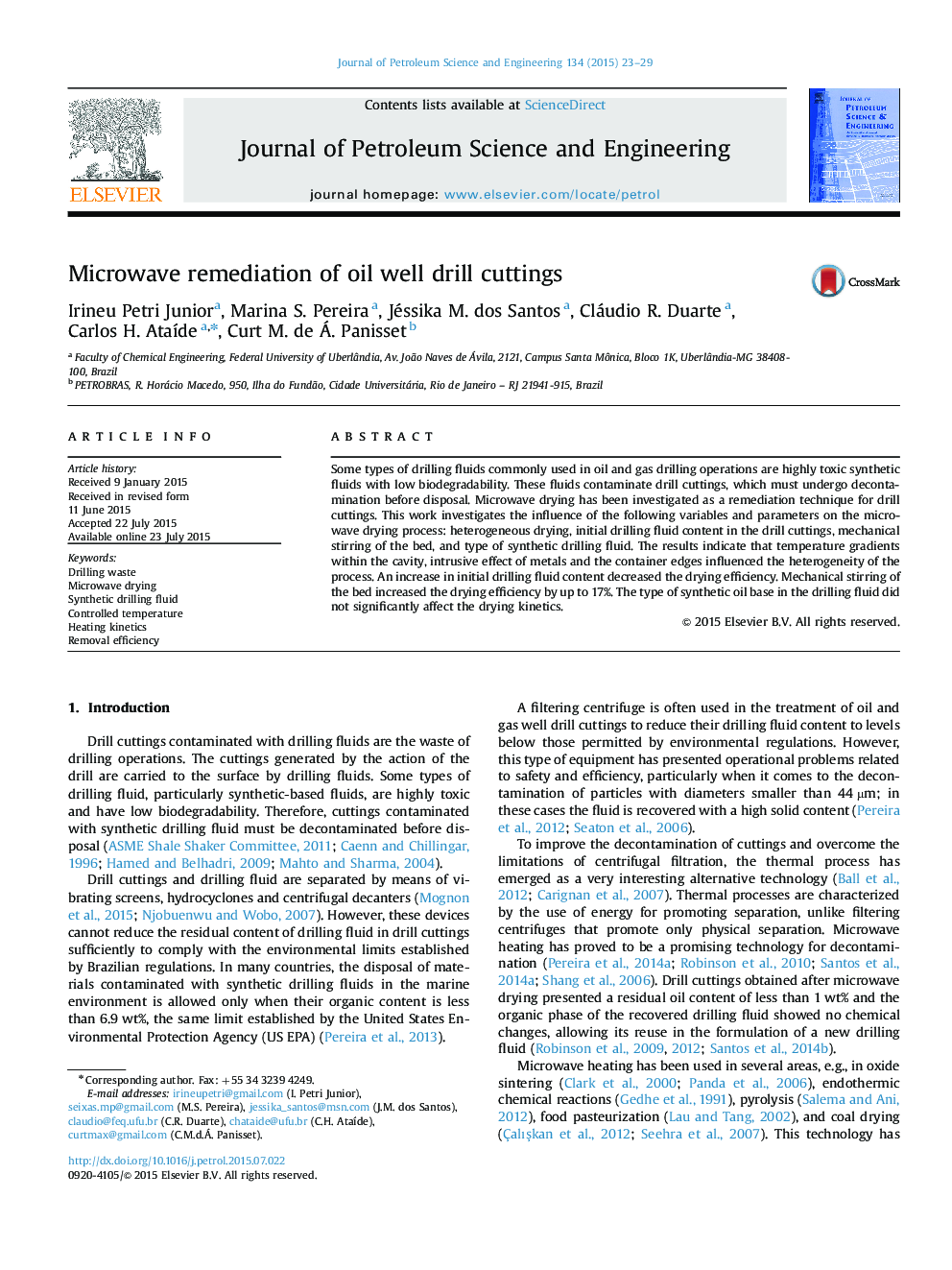| Article ID | Journal | Published Year | Pages | File Type |
|---|---|---|---|---|
| 1754662 | Journal of Petroleum Science and Engineering | 2015 | 7 Pages |
•The microwave treatment of drilled cuttings was accomplished.•Drilled cuttings contaminated with two synthetic drilling fluids were treated.•Stirred bed in microwave heating has proven to be efficient.•A multimode microwave heating can provide a heterogeneous drying.•The initial fluid content influences the efficiency of drying.
Some types of drilling fluids commonly used in oil and gas drilling operations are highly toxic synthetic fluids with low biodegradability. These fluids contaminate drill cuttings, which must undergo decontamination before disposal. Microwave drying has been investigated as a remediation technique for drill cuttings. This work investigates the influence of the following variables and parameters on the microwave drying process: heterogeneous drying, initial drilling fluid content in the drill cuttings, mechanical stirring of the bed, and type of synthetic drilling fluid. The results indicate that temperature gradients within the cavity, intrusive effect of metals and the container edges influenced the heterogeneity of the process. An increase in initial drilling fluid content decreased the drying efficiency. Mechanical stirring of the bed increased the drying efficiency by up to 17%. The type of synthetic oil base in the drilling fluid did not significantly affect the drying kinetics.
Graphical abstractFigure optionsDownload full-size imageDownload as PowerPoint slide
